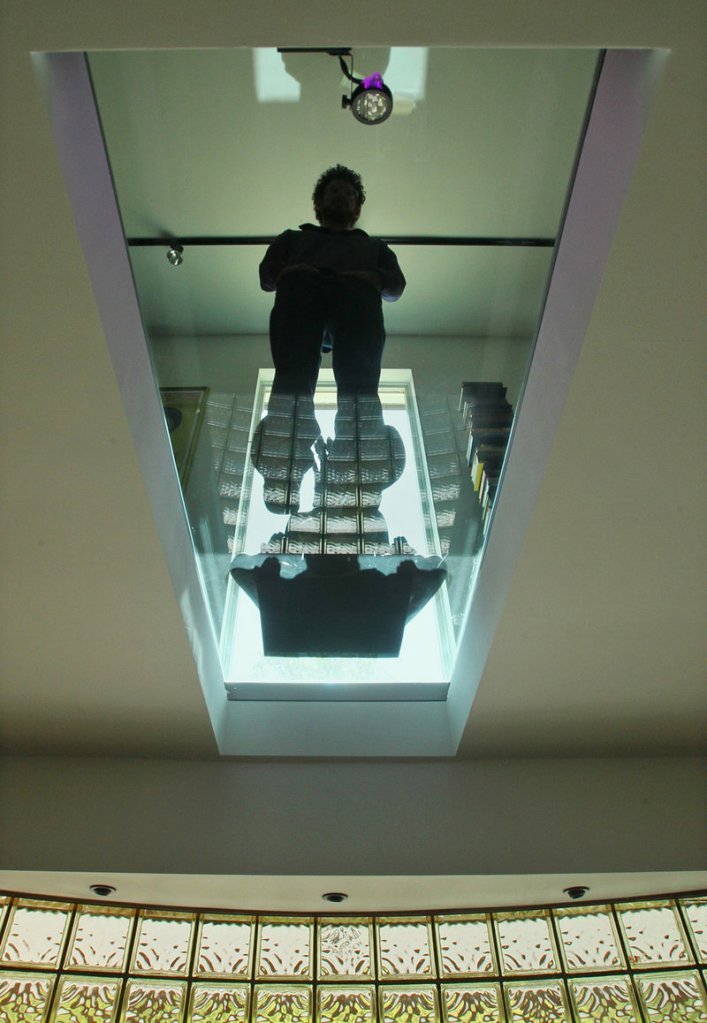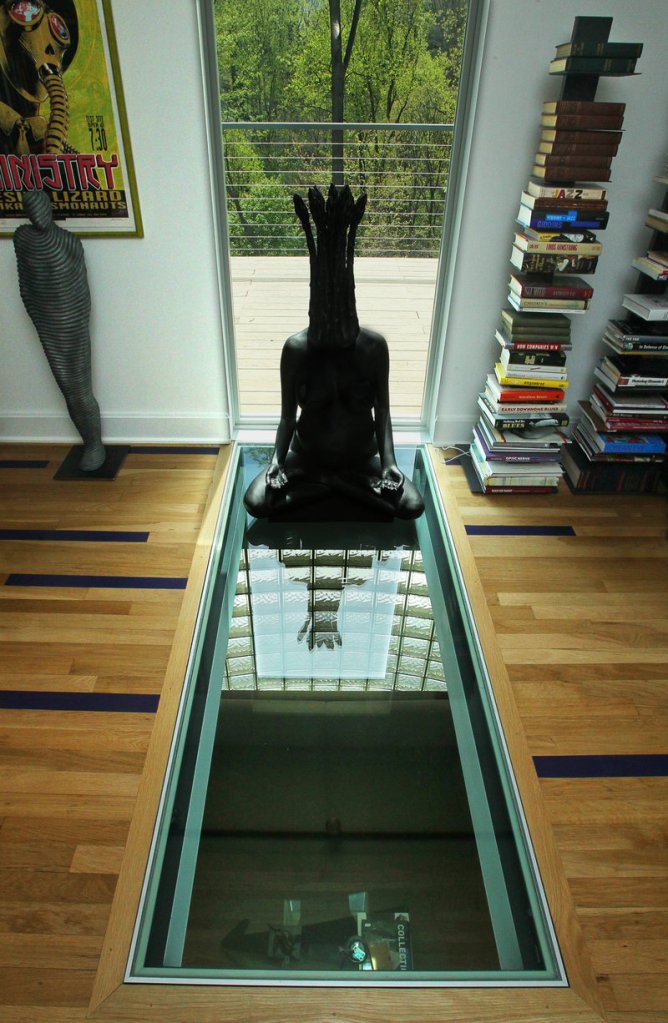Steve Levey faced a challenge: How could he bring light to his clients’ dark, cramped first-floor sitting room?
It’s a common problem. Levey’s solution, however, was anything but.
The Akron, Ohio, artist and interior designer brightened the room by installing a partial glass floor in the home office directly above, adjacent to a new window in that same upstairs room. The floor serves as a sort of internal skylight, flooding the sitting room below with sunlight and giving its occupants a glimpse of sky through the window.
It’s also a sleek architectural accent that gives the home office the artsy, contemporary edge the homeowners prize.
The floor is an example of the use of structural glass, glass that is specially manufactured to serve as a structural element in a building. Usually it’s used in commercial settings, but it sometimes shows up in high-end homes in such forms as glass walls, canopies, floors, stair landings and stair treads, said Manuel Marinos, president and chief executive officer of Innovative Structural Glass in Three Rivers, Calif. Even in more mainstream homes, frameless shower enclosures made of structural glass panels have become common.
Structural glass isn’t a new material, although it’s being used in new ways. It was developed in the early 1900s and was often made in colored, opaque form to cover buildings’ exterior walls and give them the signature streamlining of the Art Deco and Art Moderne styles.
One of the earlier types of structural glass was Vitrolite, which still clads countless bathroom walls and fireplace surrounds in some older homes.
The 3-by-7½-foot floor panel Levey installed is about an inch thick and rests in an aluminum frame set into the room’s white oak floor. Getting the panel to sit flush with the wood floor was no small feat, considering the house dates to the 1940s and its floors weren’t level, said Levey, who runs Steve Levey Interiors (www.stevelevey.com).
“It was definitely a learning experience. … There was a lot of finagling round with shims and stuff,” he said.
The floor panel forms an L-shape with the adjacent window, which is the same size. A sculpture rests on the floor at the base of the window, so the glass creates a sort of crystal frame for the art. At night, the glass glows with the light from LEDs around the perimeter.
The glass floor is strong enough to walk on, although the clients’ dogs won’t cross it and their guests sometimes hesitate to step on it, Levey said. “Wearing a skirt is the only drawback,” he said with a laugh.
Glass may seem like a fragile substance for a floor, but this glass is specially engineered for strength.
Structural glass is thicker than annealed glass, the kind that’s used in typical house windows, Marinos said. It’s also processed differently, although the processing varies according to how the glass is to be used.
Structural glass is engineered specifically for each application, he explained. The forces to which the glass could be exposed are considered, be it hurricane winds, the impact of a bullet or just the pounding of high heels. Then both the makeup of the glass and the processes for manufacturing it are designed to allow the glass to withstand those forces, he said.
In the case of a glass floor, the glass is tempered, meaning it’s heated to a near molten state and then cooled rapidly with air. That causes the internal part of the glass to try to push itself out toward the outer layer, creating a tension that strengthens the glass, Marinos said.
Glass floors are also laminated, created from layers of glass with a bonding material between the layers to add strength. Even if the top ply were to break, the bonding material would prevent the whole panel from shattering, Marinos said. That eliminates the danger of someone falling through.
It’s possible for structural glass to break, Marinos said, perhaps because something hits the glass or because of incorrect installation, improperly engineered supports or contamination in the glass. Still, it’s unusual. He said he’s seen steel beams being hurled against structural glass and bouncing off.
Besides being strong, it’s beautiful. A wall of glass can provide a view of the outdoors that’s uninterrupted by metal or wood frames, Marinos noted. He said it’s also possible to create curves and other interesting shapes, or to dress up structural glass with images that are sandblasted into the glass or either silk-screened or printed on.
The kind of elegance comes at a price.
“It is expensive, no question about it,” Marinos said. Nevertheless, he said even a fairly small piece of glass can have a big aesthetic impact.
His company, for example, created a 4-by-4-foot floor panel for the combined kitchen and dining area of a home in California, providing a view of the river that flows underneath that part of the house. The panel was about $300, he said.
For Levey, though, the best part of using glass for his clients’ floor was the novelty.
“Doing something new is the most fun,” he said.
Send questions/comments to the editors.



